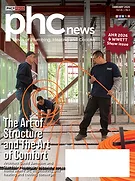Automatic sprinklers are required in many buildings being designed and constructed today. They have a proven track record for controlling fires within buildings since they were first introduced almost 150 years ago. Model building and fire codes throughout the world recognize their benefit in the design of buildings, especially high-rise buildings.
In 1971, at an event known as the Airlie House Conference, a congregation of international fire safety experts convened and ultimately agreed that fire sprinklers are a critical element in high-rise fire safety. Today, the codes provide certain allowances or trade-offs when sprinkler systems are installed.
In June 2013, the Society of Fire Protection Engineers (SFPE), in conjunction with the International Code Council, published the first edition of the “Engineering Guide for Designing Fire Safety in Very Tall Buildings.” It is intended as a tool to help those involved in the design, review and construction of very tall buildings deal with special topics affecting the fire safety performance in these buildings. These topics help develop the fire safety performance plan for the building. One of the topics includes suppression systems.
Very tall buildings pose unique issues for suppression systems, including the ability to deliver water to all areas of the building due to the height. Other factors to consider are the reliability of the systems, the location of fire pumps and the arrangement of pressure zones. These were some of the main factors addressed in the first edition of the guide.
It stressed the importance of conducting a risk analysis and then developing a fire strategy plan to address the identified risks at the beginning phases of design to help address how the suppression system would perform. The strategy should include how reliable the water supply is and the local response capability for fighting fires in tall buildings. These strategies may require more emphasis on the design of the sprinkler system reliability.
Reliability
Automatic sprinkler systems are very reliable when properly designed and maintained. They’ve demonstrated a proven track record for the control of fires. However, very tall buildings can pose additional constraints on the systems. Therefore, other reliability features should be taken into consideration. These include redundant water supplies, fire pumps and increased water delivery rates.
Water supplies for very tall buildings need to be evaluated to determine their reliability. Multiple connections to the city’s water distribution system should be considered as well as on-site water storage.
On-site water storage can be located within the building to augment the municipal water system. Multiple connections to the municipal system also can help offset the loss of water from a single connection.
The designer should consider how the distribution within the building can be enhanced to improve reliability. Multiple risers serving systems on floors can improve reliability as well as alternating floor systems from different risers.
Fire Pumps
Very tall buildings typically have heights exceeding what a fire pump can handle due to pressure limitations. Fire pumps are sized to offer output pressures up to 350 psi (2413 kPa). Although pumps can be obtained with higher output pressures, the availability is limited. This often requires multiple pumping zones within the building.
For very tall buildings, it is common to see pumps installed in series, with higher zone pumps relying on lower zone pumps to feed them. This requires intermediate pumps to be placed throughout the building. The system designer needs to be aware of the sprinkler and standpipe zone limitations to adequately place pumps within the building.
The design also should consider the need for backup pumps should the primary pumps fail or be out of service. For each fire pump zone, a primary and backup pump can be provided to improve reliability.
Pressure Zones
Due to the restrictions of operating pressures in sprinklers and standpipe systems, multiple pressure zones will be needed. Sprinkler and standpipe systems are limited to working pressures of 175 psi (1,200 kPa). Since pressure is needed to boost water up the building, multiple pressure zones will be needed based on the height of the building.
When establishing pressure zones within tall buildings, the designer must consider how to layout the zones to meet required pressures for both sprinkler and standpipe systems. One method is to design piping so the pressure is limited on that zone to meet both conditions, often using a single pressure-reducing valve (PRV) station. This creates a series of sub-risers fed from a high-pressure riser within the building.
Another approach is to use one riser and PRVs at each sprinkler connection or hose valve to limit pressures on the systems. This reduces the amount of piping needed but introduces far more PRVs. It can increase the cost of the system and introduce points of failure if they are not properly maintained.
In 2021, the second edition of the guide will be published. This edition includes additional topics to be considered in very tall buildings due to lessons learned and new technology.
Additional topics addressed for suppression systems include discussions on water hammer, a phenomenon potentially impacting all pressurized piping networks but has specific considerations in very tall buildings, and flow control, which is related to maintaining functionality in a piping system in which a breach of the piping network has occurred.
Water Hammer
The classical type of water hammer is the rapid closing of a valve in a piping system to stagnate a flowing fluid or the rapid start-up of a pump delivering a fluid to a voided section of pipe. One type of water hammer mechanism that is especially important to consider as part of a fire suppression system design for very tall buildings is one induced by column separation and rejoining.
Column separation and rejoining refers to the phenomena where the liquid drains away in a section of pipe, resulting in the formation of a very low, near-vacuum pressure void. The void volume is occupied by low-pressure saturated vapor corresponding to the fluid temperature.
It is susceptible in any piping configuration that changes 9.1 meters (30 feet) or more in elevation, which is especially true for systems employing standpipes in very tall buildings. Mitigation strategies will need to consider both active and passive aspects of the design to prevent liquid drain down.
Flow Control
The intent is to strategically locate automatically operating valves, called automatic breach control valves (ABCVs), in the building fire protection risers so the loss of a riser would not render the rest of the fire protection (sprinkler or standpipe) system unusable, thus controlling a potentially debilitating flow on the suppression system.
A riser could be lost for several reasons, including significant damage to the building. A more common reason that a fire protection riser could be lost is the failure of a fitting or device (possibly due to water hammer). An ABCV in the right location could help minimize the amount of the system out of service until the repair is completed.
Because of the nature of the ABCV operation, determining the operational pressure and flow design range is quite challenging without adversely affecting the operation of the fire protection systems. For instance, if the operational flow and pressure are not properly identified or the ABCVs are not properly exercised and maintained, the ABCV could compromise the flow of water to the fire protection systems downstream of the valve.
One of the drawbacks of using an ABCV is that the fire sprinkler system is generally limited in its ability to operate far beyond its designed demand flow or pressure.
Fire suppression and standpipe systems are critical life safety elements in very tall buildings. As these buildings go higher above the ground, the design of these systems requires astute technical oversight and consideration. The second edition of the “Engineering Guide for Designing Fire Safety in Very Tall Buildings” is a useful reference to help all designers in identifying critical issues to be considered.





